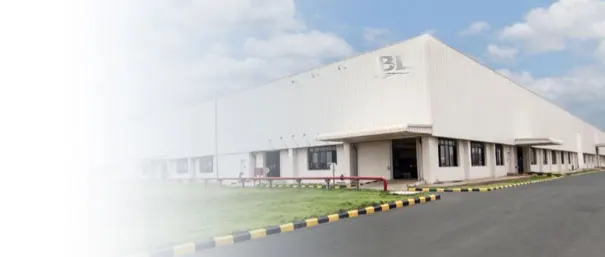GB/T 019Cr19Mo2NbTi Stainless Steel: High-Performance Austenitic Alloy for Elevated Temperature & Corrosive Environments
GB/T 019Cr19Mo2NbTi (commonly referenced as 1Cr19Mo2NbTi or Chinese equivalent to AISI 347/347H) is a stabilized austenitic stainless steel grade designed for superior intergranular corrosion resistance and high-temperature strength. Its chemical composition—featuring 19% chromium, 9-13% nickel, and stabilizing elements niobium (Nb) and titanium (Ti)—prevents chromium carbide precipitation during welding or prolonged exposure to 450-850°C. This grade is widely specified in petroleum refining, power generation, and chemical processing industries where thermal cycling and corrosive media are present. Below is a technical breakdown of its metallurgical properties, processing characteristics, and industrial applications.
1. Chemical Composition (GB/T 20878 & GB/T 1220 Standards)
| Element | Content Range (wt%) | Metallurgical Role |
|---|---|---|
| Carbon (C) | ≤ 0.08% | Balanced for strength without sensitizing grain boundaries; lower variants (e.g., 019Cr19Mo2NbTi-L) reduce carbide formation. |
| Chromium (Cr) | 18.00 – 20.00% | Forms passive Cr₂O₃ film for oxidation/corrosion resistance; stabilized by Nb/Ti to prevent Cr-depletion. |
| Nickel (Ni) | 9.00 – 13.00% | Stabilizes austenitic microstructure; enhances toughness and resistance to stress corrosion cracking (SCC). |
| Molybdenum (Mo) | 1.80 – 2.50% | Improves pitting resistance (PREN ≥ 25); strengthens resistance to reducing acids (e.g., sulfuric, phosphoric). |
| Niobium (Nb) | 10×C min – 1.00% max | Carbide former; binds carbon to prevent intergranular corrosion (IGC) during welding/heat exposure. |
| Titanium (Ti) | 5×C min – 0.80% max | Complementary stabilizer to Nb; further inhibits Cr₂₃C₆ precipitation in heat-affected zones (HAZ). |
| Manganese (Mn) | ≤ 2.00% | Deoxidizer; improves hot workability and partial replacement for nickel in cost-sensitive applications. |
| Silicon (Si) | ≤ 1.00% | Enhances oxidation resistance at high temperatures; aids in deoxidation during melting. |
| Phosphorus (P) | ≤ 0.035% | Controlled impurity; minimized to prevent embrittlement and reduce IGC susceptibility. |
| Sulfur (S) | ≤ 0.030% | Restricted to avoid hot cracking during welding and reduce inclusion formation. |
2. Mechanical Properties (Annealed Condition)
- Tensile Strength (Rm): ≥ 520 MPa (GB/T 20878); higher in cold-worked or aged conditions.
- Yield Strength (Rp0.2): ≥ 205 MPa; retains strength at elevated temperatures (up to 600°C).
- Elongation (A): ≥ 40% (50mm gauge length); excellent ductility for forming complex shapes.
- Hardness (HB): ≤ 187; suitable for machining with carbide tools (avoid work hardening).
- Impact Toughness (AKV): ≥ 100 J at -20°C; maintains toughness in cryogenic and thermal cycling applications.
- Creep Resistance: Superior to 304/316 at 500-700°C due to Nb/Ti stabilization and Mo addition.
3. Manufacturing & Heat Treatment
- Melting Practice: Electric arc furnace (EAF) + AOD (argon oxygen decarburization) or VOD (vacuum oxygen decarburization) to achieve ultra-low carbon and precise Nb/Ti ratios. Secondary refining ensures inclusion control (≤ 1.0 per ASTM E45 Method A).
- Hot Working: Forged or rolled at 1150-1250°C; avoid temperatures below 900°C to prevent carbide precipitation. Water quenching post-hot working to retain austenite.
- Cold Working: Readily formable via deep drawing, bending, or spinning. Intermediate annealing (1050-1100°C) required for heavy cold reduction (>30%) to restore ductility.
- Solution Annealing: 1020-1120°C followed by rapid cooling (water or air) to dissolve NbC/TiC and homogenize microstructure. Critical for restoring corrosion resistance after welding.
- Stabilization Treatment (Optional): 850-900°C for 2-4 hours (for welded components) to precipitate NbC and mitigate IGC risk in service.
- Surface Finishing: Pickling (HNO₃ + HF) to remove oxide scale; passivation (HNO₃) to enhance Cr₂O₃ film. Common finishes: 2B (general), No.4 (architectural), BA (decorative).
4. Key Applications by Industry
Petrochemical & Refining
Hydrocracker reactors, reformer tubes, and sulfuric acid coolers where resistance to polythionic acid stress corrosion cracking (PASCC) is critical. Compliant with NACE MR0175/ISO 15156 for H₂S environments.
Power Generation
Boiler superheaters, steam turbines, and heat recovery steam generators (HRSG) operating at 500-650°C. Resists oxidation and creep deformation in steam environments.
Chemical Processing
Acetic acid distillation columns, urea synthesis equipment, and phosphoric acid evaporators. Mo content provides resistance to reducing acids and chloride-induced pitting.
Aerospace & Defense
Jet engine exhaust systems, afterburner components, and missile fuel tanks due to high-temperature stability and resistance to thermal fatigue.
Nuclear Industry
Primary loop piping and fuel element cladding in pressurized water reactors (PWR); low cobalt content variants reduce radioactive activation.
Welded Fabrications
Pressure vessels, heat exchangers, and pipelines where post-weld stabilization eliminates need for PWHT (post-weld heat treatment) in thin sections.
5. Comparison with Related Grades
| Grade | Key Alloying Elements | Primary Advantage | Typical Use Case |
|---|---|---|---|
| 019Cr19Mo2NbTi | Nb + Ti stabilized, 2% Mo | Superior IGC resistance; high-temperature strength | Welded structures in corrosive/high-temp environments (e.g., refinery furnaces) |
| AISI 347/347H | Nb stabilized, 0.08% C (347H: 0.04-0.10%) | ASTM equivalent; 347H offers higher creep resistance | ASME Boiler Code applications (e.g., power plant piping) |
| AISI 321 | Ti stabilized, no Mo | Lower cost than 347; good for intermittent high-temp exposure | Aircraft exhaust manifolds, expansion joints |
| 022Cr17Ni12Mo2 (316L) | 2% Mo, low C, no Nb/Ti | Better pitting resistance but susceptible to IGC when welded | Marine environments, pharmaceutical equipment |
6. Selection Guidelines & Engineering Considerations
- Welding Procedures: Use ER347 or ER347H filler metal (AWS A5.9). Preheat not required for thin sections; maintain interpass temperature ≤ 150°C. Post-weld stabilization (850-900°C) recommended for thick sections (>6mm) in corrosive service.
- Corrosion Limitations: Avoid continuous use in halides (e.g., seawater) or strong oxidizing acids (e.g., concentrated nitric acid). For chloride pitting, consider 022Cr17Ni14Mo2 (316L) or super austenitics (e.g., 904L).
- High-Temperature Service: Maximum continuous service temperature: 750°C in air, 850°C in sulfur-free environments. Avoid thermal cycling in 450-850°C range to prevent sigma phase formation.
- Machinability: Use rigid setups, sharp tools (e.g., KC850 grade inserts), and slow speeds (60-90 m/min) to mitigate work hardening. Chip breakers recommended for turning operations.
- Quality Certification: Verify compliance with GB/T 24511 (pressure equipment), GB/T 4237 (hot-rolled plates), or ASME BPVC Section II for critical applications. Request PMI (positive material identification) for Nb/Ti content.
7. Request a Technical Quote for 019Cr19Mo2NbTi Stainless Steel
Need customized 019Cr19Mo2NbTi stainless steel products (plates, bars, pipes, or welded fabrications)? Our metallurgical experts provide tailored solutions for high-temperature and corrosive applications. Submit your specifications (dimensions, standards, quantity) for a competitive quote and lead time estimate.
.content-wrap { width: 100%; max-width: 1200px; margin: 0 auto; padding: 20px 30px; font-family: Arial, Helvetica, sans-serif; color: #333; line-height: 1.8; }
.article-title { font-size: 28px; color: #222; font-weight: 700; margin: 0 0 30px; padding-bottom: 15px; position: relative; border-bottom: 2px solid #eee; }
.article-title::after { content: “”; position: absolute; left: 0; bottom: -2px; width: 120px; height: 2px; background-color: #2c5282; }
.article-intro { font-size: 16px; color: #444; margin: 0 0 40px; text-align: justify; }
.section-title { font-size: 22px; color: #2c5282; font-weight: 600; margin: 50px 0 25px; padding-left: 15px; border-left: 4px solid #2c5282; }
.table-container { width: 100%; overflow-x: auto; margin: 0 0 30px; }
.spec-table, .compare-table { width: 100%; border-collapse: collapse; background-color: #fff; box-shadow: 0 2px 5px rgba(0,0,0,0.05); }
.spec-table th, .spec-table td, .compare-table th, .compare-table td { padding: 12px 15px; border: 1px solid #eee; text-align: left; }
.spec-table th, .compare-table th { background-color: #f8f9fa; color: #2c5282; font-weight: 600; }
.spec-table tr:hover, .compare-table tr:hover { background-color: #fafafa; }
.property-list, .process-list, .precaution-list { padding-left: 20px; margin: 0 0 35px; }
.property-list li, .precaution-list li { margin: 0 0 12px; font-size: 15px; }
.process-list li { margin: 0 0 18px; font-size: 15px; }
.property-list strong, .process-list strong, .precaution-list strong { color: #2c5282; }
.application-grid { display: grid; grid-template-columns: repeat(auto-fit, minmax(280px, 1fr)); gap: 25px; margin: 0 0 40px; }
.application-item { padding: 20px; background-color: #fafafa; border-radius: 6px; border: 1px solid #eee; }
.application-item h3 { font-size: 18px; color: #2c5282; margin: 0 0 12px; font-weight: 600; }
.application-item p { font-size: 14px; color: #555; margin: 0; }
.quote-cta-section { margin: 60px 0 20px; padding: 30px; background-color: #f8fafc; border-radius: 8px; border: 1px solid #e2e8f0; }
.quote-cta-content { max-width: 800px; margin: 0 auto; text-align: center; }
.quote-cta-content p { font-size: 16px; color: #475569; margin: 0 0 30px; line-height: 1.8; }
.quote-cta-btn { display: inline-block; padding: 12px 35px; background-color: #2c5282; color: #fff; font-size: 16px; font-weight: 600; text-decoration: none; border-radius: 4px; transition: background-color 0.3s ease; }
.quote-cta-btn:hover { background-color: #1e3a8a; }


